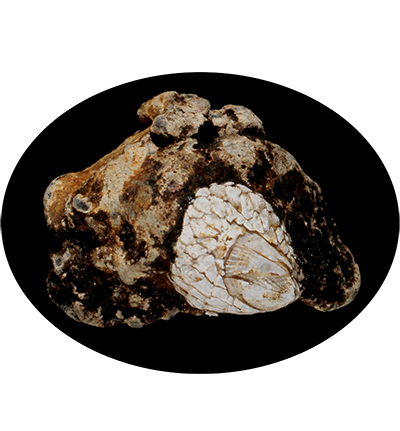
Imbricaverruca yamaguchii is a species of barnacle in the family Neoverrucidae, found in deep-sea hydrothermal vent ecosystems. This species is an obligate symbiont of abyssal hydrothermal vents, relying on the unique chemical environment of these vents for survival. Its specialized adaptations allow it to thrive in extreme conditions, including high temperatures and low oxygen levels, making it an important species for studying the biodiversity and ecological dynamics of hydrothermal vent communities.
Animalia (Kingdom); Arthropoda (Phylum); Crustacea (Subphylum); Multicrustacea (Superclass); Thecostraca (Class); Cirripedia (Subclass); Thoracica (Infraclass); Thoracicalcarea (Superorder); Scalpellomorpha (Order); Neolepadoidea (Superfamily); Neoverrucidae (Family); Imbricaverruca (Genus); Imbricaverruca yamaguchii (Species)
Imbricaverruca yamaguchii Newman, 2000
1. Newman W A. A new genus and species of barnacle (Cirripedia, Verrucomorpha) associated with vents of the Lau. Back-Arc Basin: its gross morphology, inferred first juvenile stage and affinities[J]. ZOOSYSTEMA-PARIS-, 2000, 22(1): 71-84. (Newman et al., 2000)
Named for Toshiyuki Yamaguchi in appreciation of his numerous and exacting works on the systematics and ecology of the living and fossil cirripeds, especially the vent barnacles
| Species | Phylum | Common Name | Ecosystem | Depth | Habitat | NCBI Taxonomy ID |
|---|---|---|---|---|---|---|
| Imbricaverruca yamaguchii | Arthropoda | - | Cold seep/Hydrothermal vent | >1000 | hydrothermal vent (24°35′ S, 176°54′ W) at Southwest Pacific Ocean | 2766000 |
| Genome Assembly | Genome Size | Assembly level | Released year | WGS accession | Submitter | BioProject | BUSCO completeness (%) | Scaffold/Contig N50 (kb) | GC content (%) | Repeat Rate (%) | Gene Number |
|---|---|---|---|---|---|---|---|---|---|---|---|
| ASM3444057v1 | 768.02Mb | Contig | 2023 | JAOTOL01 | Korea Research Institute of Bioscience and Biotechnology | PRJNA867041 | 89.30 | - | - | - | - |
| Title | Journal | Pubmed ID |
|---|---|---|
| Comparative genomics reveals the dynamic evolutionary history of cement protein genes of barnacles from intertidal to deep-sea hydrothermal vents | Molecular Biology and Evolution | 37955198 |

